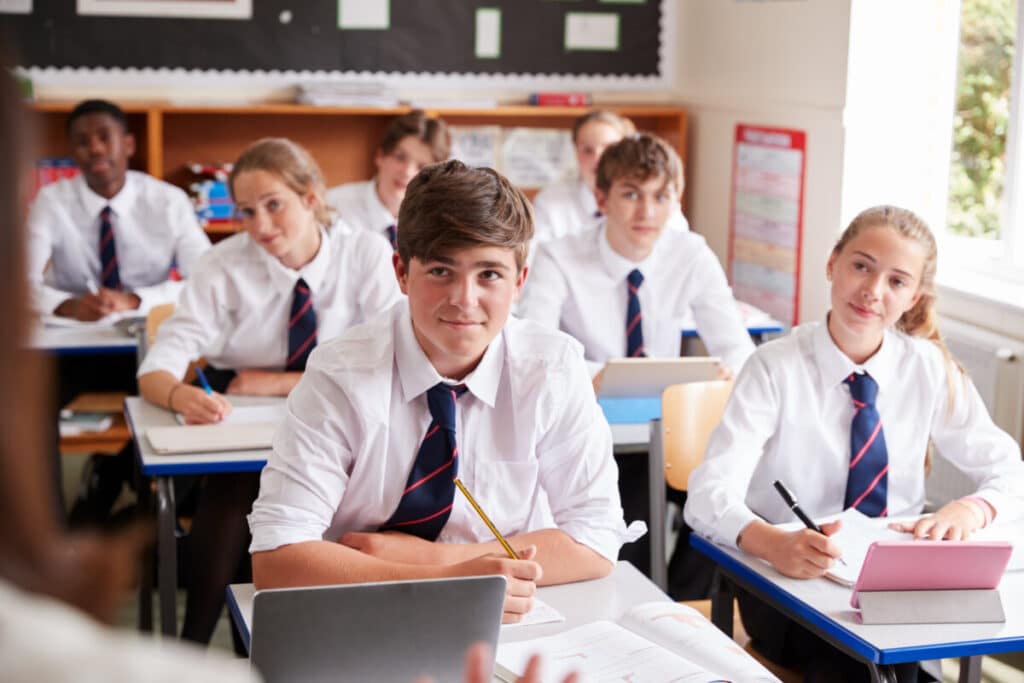Average Class Sizes in Public Schools Vs Private Schools
When choosing between public schools and private schools, the class size makes a huge difference. It affects the whole experience of going to school.
The average class size is smaller in private schools than in public schools. The size of the classroom affects the students and their learning experience, the teachers, and how they teach, but also differs depending on the location and type of school.
Continue reading to learn about the benefits of different class sizes.
Statistics
Class Size differs all over the country, and the world, but overall the class sizes in private schools on average are smaller than in public schools. According to Fatherly, the average class size in public schools is 25 students, and the average class size in private schools is 19. It is very common for elementary schools to have a class size of 25 students, only having more if there is an uneven amount of students in the school’s grade level. (Source)
According to Public School Review, the average private school classroom ranges from 15 to 20 students, while public schools range from 20-23 students. These statistics were found in 2008. This may not seem like a huge difference, but the more students there are, the less attention your child receives at school. (Source)
Type of Private School
Statistics also show that the average private school classroom size differed on the type of private school, and the religion it is associated with. The National Center for Educational Statistics shows that the average classroom size for private elementary schools in the 2017-2018 school year was 16.7.
In Catholic Private Schools, the average goes a little bit higher, ranging from 17.1 to 18.9. Other religions associated with private schools include Baptist, Lutheran, Jewish, and Seventh Day Adventist. The average classroom size for a Baptist private school is 11.3 students. Lutheran is at 14.3, and Seventh Day Adventist is at 14.9.
Non-religious private schools with special emphasis have an average classroom size of 17.6. Private schools with special education have an average classroom size of 7.5. This is due to the students needing extra care and attention, as well as specialized education. (Source)
Level of School and Location
The National Center for Educational Statistics also says that the average classroom size in a public elementary school for the 2017-2018 school year was 20.9. The average in middle school and high school is 16, due to students having multiple teachers throughout the day. When comparing just elementary schools, the average in public schools is higher than in private schools. (Source)
When comparing two schools in the same area, the average classroom size was the same. A private catholic school had a student-teacher ratio of 14:1, while the middle school down the street had the same ratio. This was in the state of Kansas, and the average classroom size for the state is 19.7. This shows that classroom size not only differs by the state but also the city. (Source)
Now that we have the data, let’s talk about what it all means.
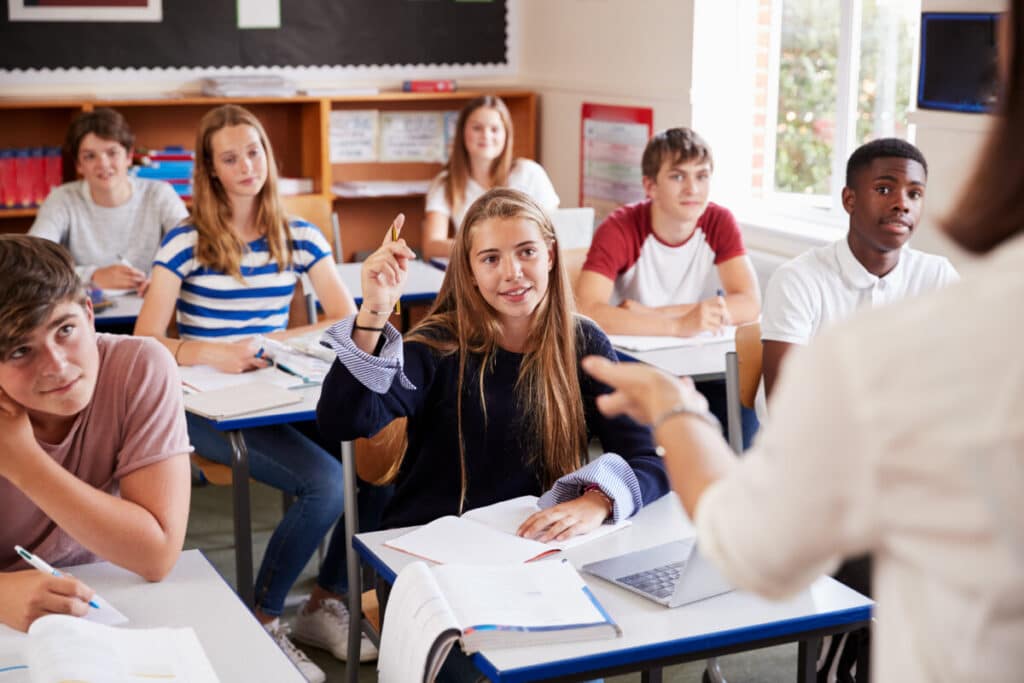
Why Class Sizes Differ
There are so many more public schools than private schools. Class size is always smaller in private schools because public schools will always have more students. Only a small percentage of the country’s education is private.
According to the National Center for Educational Statistics, the number of students enrolled in private school was 10% in the Fall of 2017. This leaves the other 90% to public schools. Public Schools are much more accessible and affordable, creating a larger classroom size. (Source)
Location
Location is a huge factor in why classroom sizes differ. Some states are overpopulated, causing schools to have more students than provided for and creating larger classroom sizes. When a school in a certain area becomes overpopulated it happens gradually, but it is also gradual for a school to find more teachers and readjust the classroom size.
There could also be some areas that have very small populations, with barely enough students to fill the school. This can create smaller classroom sizes, but a town with a small population could also have a hard time finding teachers. Both of these sides of the spectrum are extreme but are explanations for why classroom size can differ based on the area the school is in.
Rules and Regulations
The amount of students assigned to one teacher doesn’t just happen naturally. There are lots of rules and regulations on public schools, to make sure that classroom sizes do not become too big. 24 states in the country are either mandated or highly encouraged to decrease the size of their classroom.
Sometimes classroom sizes aren’t motivated by the effectiveness of learning, but by finances. Finances are also a huge factor when it comes to classroom sizes. Some schools would love to make the classroom sizes bigger, as this saves the schools a lot of money. Statistics show that increasing the student ratio nationally by one student would save the country $12 billion in teacher salary costs alone. (Source)
Religion
Within private schools, the classroom size can differ based on the type of religion it is associated with, or what its specialty is. Previously mentioned, Catholic Private Schools have a much larger classroom size than other religions, going above the average private classroom size. This may be due to how big the Catholic religion is.
It is much more popular than other religions, creating much more populated Catholic Private Schools. So if you are wanting your child to attend a private school for the smaller classroom size, I would not fully recommend a Catholic Private School.
The lowest classroom size was associated with Private Schools for Special Education. This is due to the students needing much more extra care and special attention because of their learning disabilities.
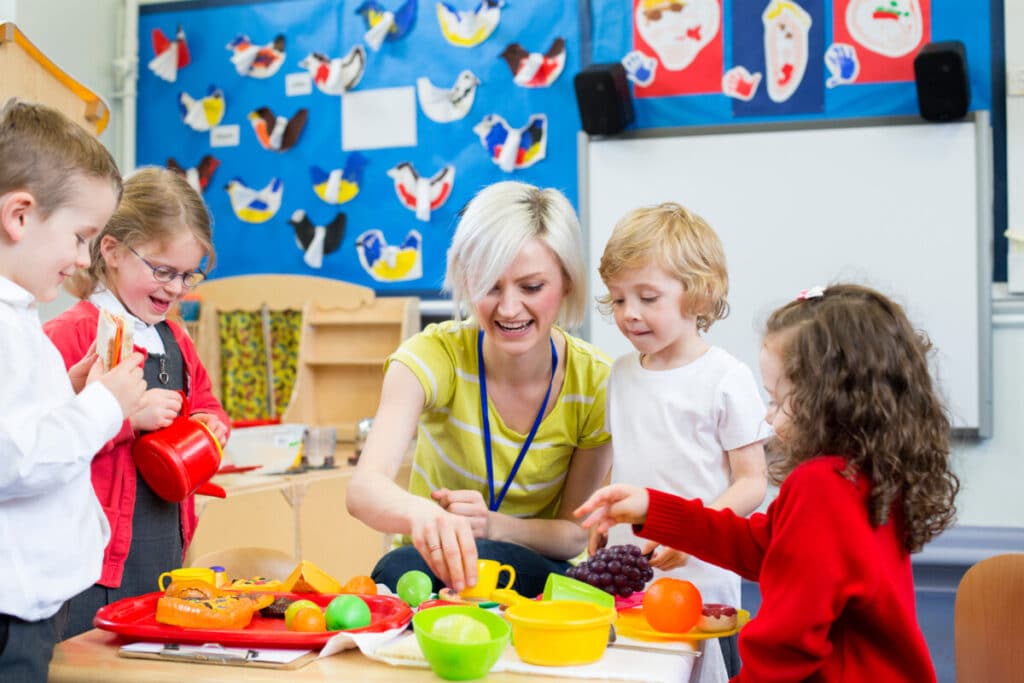
Benefits of Smaller Class Size
Smaller class sizes are what most people would prefer. It creates much more effective learning for the students. The teachers are able to give more attention to each student and monitor how well they are learning. When there are fewer students they aren’t overlooked or seen as just a number in the class, but individuals. Teachers have more time to make learning different for each individual.
Benefits of Larger Class Sizes
As mentioned previously, larger class sizes create fewer costs. The more students you have in each class, the fewer teachers you need to hire. Many schools would be tempted to do this if the class size wasn’t mandated by the board of education.
If schools were to create larger classrooms, they would have to get rid of some teachers. There are many different methods of doing this. They could get rid of the teachers who have been there the longest.
However, that isn’t fair to teachers who have been loyal to the school their whole career. Instead, the school could let go of the least effective teachers. When you really think about it, this might just rule out the con of less effective learning, by only having the most effective teachers. (Source)
Benefits of Public School
It may not seem like it, but public schools can have lots more benefits than you think. Public Schools are mandated by the state, making them orderly and organized. They have structure and stability. Each individual school cannot just make up the rules, the main requirements come from the state itself.
All of the teachers must have certain requirements to be eligible to teach at a public school. Every teacher must have a bachelor’s degree, with a certain amount of credit hours. Most also have at least one semester in a real classroom, learning alongside an experienced teacher.
They also have to take certain certifications, and pass several tests, including a background test. Not just anybody is allowed to be a teacher and supervise your kids. The state makes sure that they are highly prepared. (Source)
An obvious reason to choose a public school is that it is much less expensive. It is funded by state taxes, allowing students to receive a high-quality education at a low cost. However, the class sizes are often bigger, making learning less effective.
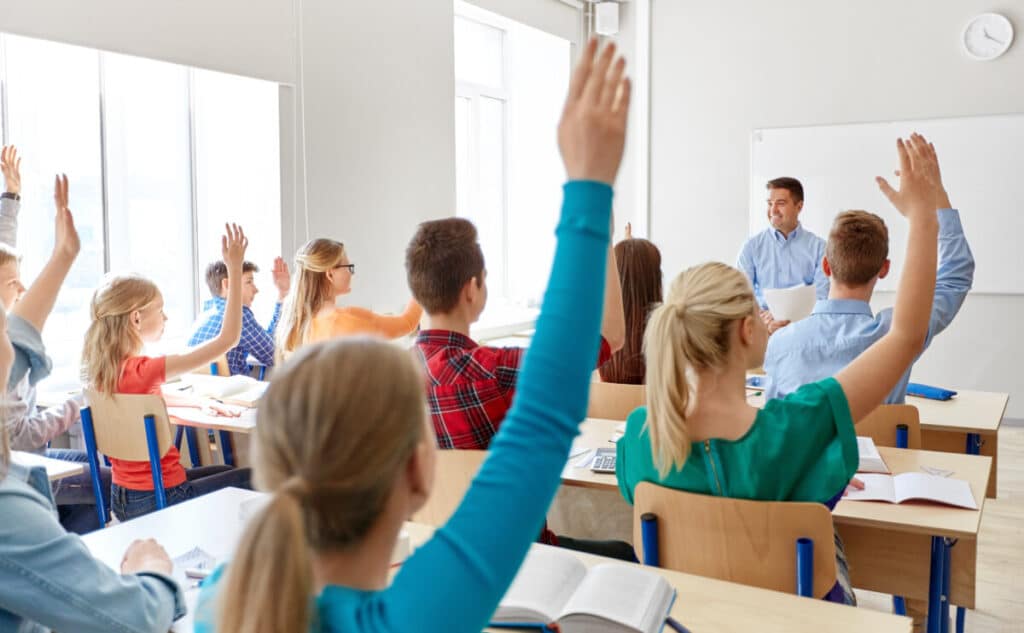
Benefits of Private School
Private schools give students more opportunities and specialized learning. Unlike public schools where the curriculum is standardized and everybody learns the same thing, private schools have many different subjects that students can learn.
Private school is often more intense and demands more of the students, but it teaches the students a lot about dedication, responsibility, and perseverance. They will come out of private school ready for the world and college.
Speaking of college, attending a private school may also increase the chances of students getting into their dream school. Once again, private schools often have smaller class sizes, allowing the learning to be individual and connected with the teacher, overall creating a better learning experience.
Public schools do have amazing teachers and programs to prepare students for the real world, but it doesn’t compare to private schools. The teachers at private schools often have more experience in what they are teaching and have a higher degree than a bachelor’s.
Private school does become overly expensive, but this just prevents overpopulation since not everybody is able to attend. Parents send their children because they want them to be focused on their education. Your child will be surrounded by good influences in their school life. Not just anybody is able to attend private school. (Source)
Schools uniforms are not everybody’s favorite, but if we are focusing on the benefits of private school, uniforms are one of them. Uniforms allow students to focus solely on school, instead of what they are wearing or how they look. When everybody is wearing the same thing, there is less to worry about. Students can then focus on their studies. Some students may even like that they don’t need to pick out an outfit every day.
How Class Size Affects Learning
Affective Learning is probably the biggest benefit of a small classroom. The teacher is able to get more done in the lesson with fewer students interrupting or asking questions, as well as spend more time grading papers and giving feedback.
Students receive more attention and care, with more insights into why they learn a certain way, or what helps them learn the best. For example, a student could have dyslexia, but if the teacher is too preoccupied with other students, they may not notice it right away. With a smaller class size, the teacher will be able to see learning disabilities in children sooner.
A study was done on class size in the 1980s. Two class sizes were created, one with 15 students another with 22 students. Over the course of four years, observers studied their learning and achievements. The smaller class size achievements were equal to getting 3 extra months of learning throughout four years. (Source)
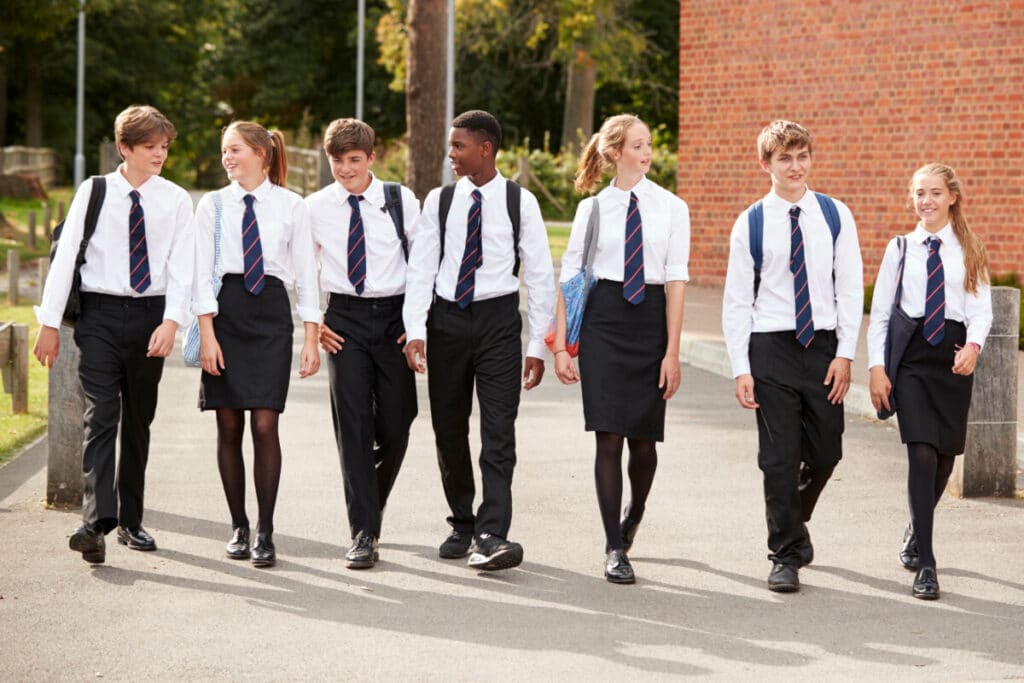
How Class Size Changes Teaching
How many students are in a classroom not only affects the students learning but also affects how the teacher is able to teach his or her students.
With more students to look after and worry or care about, teachers get more overwhelmed and stressed. There are more papers to grade, more struggling students to worry about, more parents to deal with, more conflicts to solve, and overall more students to teach. It can be very demanding of their mental health when they are always stressed and overloaded with students. Small class sizes allows teachers to stay focused on the goal of educating students.
With smaller classroom sizes, teachers can pay attention to the students learning, and their overall well-being. Teachers are so much more than just their educators. They spend all day, 9 months out of the year with these kids. They sometimes become second parents, emotional support, problem solvers, advice-givers, and so much more.
With fewer students, they can get to know them on an individual level and make a bigger impact in their life. They will be able to notice when something is going wrong, as well as when something is going well.
Private schools have smaller classroom sizes, as well as many other benefits. However, before you choose a school it is best to research their individual classroom size since not every school is the same, private or public.

